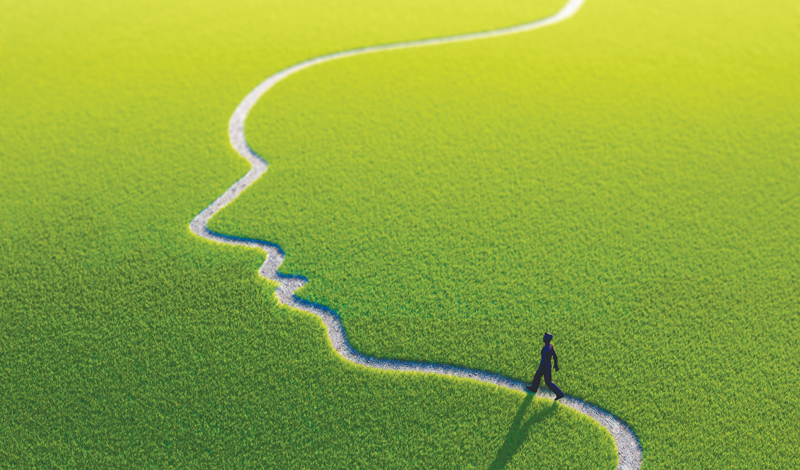This series highlights how Buddhism can enhance daily living. As Nichiren Daishonin says: “When the skies are clear, the ground is illuminated. Similarly, when one knows the Lotus Sutra, one understands the meaning of all worldly affairs.”[1]
In a 2007 op-ed, Ikeda Sensei wrote:
The vital, vibrant currents of dialogue have the capacity to shake even the most stubborn allegiance to the use of force. Dialogue is not limited to the exchange of pleasantries but includes the sharing of sharply differing perspectives. Courage and endurance are essential if we are to continue the painstaking work of loosening the knots of attachment that bind people to a particular point of view.[2]
Optimism, persistence and courageous discussions are potent sources of hope for creating a better future. But they must be grounded in a clear view of the realities of our world.
In her newest book, Nuclear War: A Scenario, investigative journalist Annie Jacobsen introduces a reality most would rather not think about. Drawing from dozens of expert interviews and detailed research, she offers a hypothetical scenario of a surprise nuclear missile attack by a rogue nation. It sparks a chain of escalating defensive and retaliatory nuclear strikes that lead to the ultimate destruction of civilization.
It’s an extremely bleak picture. But talking about it, the author insists, is not fearmongering. It’s a starting point for constructive dialogue.
Jacobsen, who previously authored six books on military and intelligence topics, confided in a recent interview that she tended to think maintaining abundant arms was the only way to deal with the world’s bullies. But, she said: “Writing and reporting this book actually had the opposite effect on me. It’s really about communicating. The only solution is communication. The only solution is diplomacy.”[3]
She is no longer afraid to sound “soft” for advocating dialogue over brute force, she said, because more nuclear weapons can never alleviate the threat. Dialogue is the only road to a solution.
Protecting Our Fundamental Right to Live
Established in 1930, the Soka Gakkai saw rapid growth in postwar Japan, in the aftermath of the atomic bombings of Hiroshima and Nagasaki.
From the early 1950s, the United States and the Soviet Union were mass-producing and stockpiling tens of thousands of hydrogen bombs, hellish weapons 50 to 100 times more destructive than those dropped on the two Japanese cities.
Around that time, second Soka Gakkai President Josei Toda began writing and speaking about the menace of nuclear weapons. On Sept. 8, 1957, he issued his Declaration for the Abolition of Nuclear Weapons, proclaiming they violate every human being’s fundamental right to live. He called on the youth to uproot the disrespect for life that underlies and justifies amassing nuclear weapons.[4]
Heeding his mentor’s wish, Ikeda Sensei worked for many decades to this end. In January 1975, he traveled to the five nuclear-armed nations—the U.S., the Soviet Union, the U.K., France and China—to discuss with leaders in society paths to lessening tensions and to peace. On Nov. 9 that year, in a speech in Hiroshima, he urged the nuclear powers to pledge never to use nuclear weapons preemptively in any conflict.
Recently, beginning in July 2022, Sensei issued three statements urging reductions in nuclear arms. In his last, written in April 2023, he called on leaders at that month’s G7 Hiroshima Summit:
Today, amid a political climate that some are even calling “a new cold war,” it is my fervent wish that constructive discussions that present a prescription for hope be undertaken at the G7 Summit in Hiroshima. I would also like to declare: Now is the time! Let us once again change the course of history through the power of people, paving a path toward a world free from nuclear weapons, a world free from war.[5]
In this spirit, the SGI is stiving to raise awareness in various arenas. This March 24, some 70,000 youth gathered in Tokyo to voice their commitment to challenging the existential threats of climate change and nuclear weapons.[6]
SGI Young Women’s Leader Hiroko Ogushi, an organizing committee member of the event, said: “We learned that when diverse stakeholders of different backgrounds unite to create change, their solidarity serves as a beacon of hope for the youth. It is our responsibility to create a world where young people feel hopeful.”[7]
What’s needed most today is a growing network of people resolved to engage in sustained dialogues and efforts for peace. This may take many forms, from individual to collective initiatives.
In the end, what each of us can do today to inspire awareness, courage and hope in even one person can significantly impact the future.
—Prepared by the SGI-USA Study Department
June 14, 2024, World Tribune, p. 11
References
- “The Object of Devotion for Observing the Mind,” The Writings of Nichiren Daishonin, vol. 1, p. 376. ↩︎
- daisakuikeda.org/sub/resources/works/essays/op-eds/jt-oped09.html <accessed on May 22, 2024>. ↩︎
- See jordanharbinger.com/annie-jacobsen-the-nuts-and-bolts-of-nuclear-annihilation/ <accessed on May 1, 2024>. ↩︎
- See Oct. 20, 2017, World Tribune, p. 2. ↩︎
- daisakuikeda.org/sub/resources/works/lect/2023apr27-g7-hiroshima-stmt.html <accessed May 17, 2024>. ↩︎
- See a report on this event, April 19, 2024, World Tribune, p. 8. ↩︎
- globalissues.org/news/2024/05/08/36673 <accessed May 17, 2024>. ↩︎
You are reading {{ meterCount }} of {{ meterMax }} free premium articles

